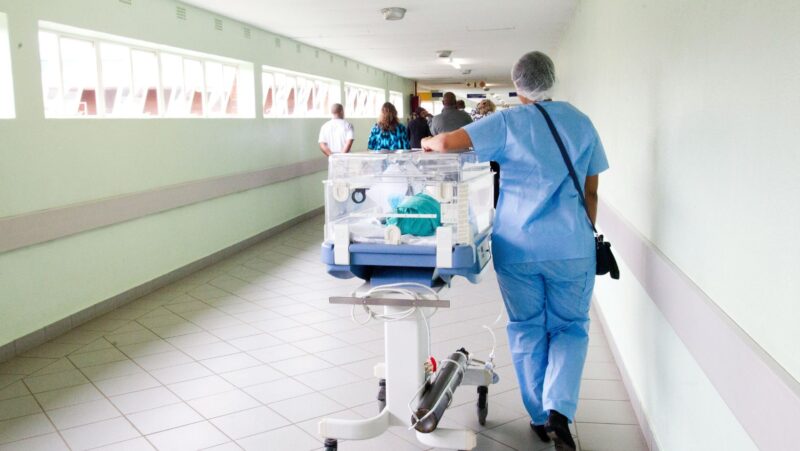
Fertility is a topic that comes with many misconceptions and myths. Understanding the truth about fertility can help women and couples make informed decisions. A common question arises: “If you ovulate in the morning can you get pregnant that night?” This question touches on the timing and viability of conception, which is often misunderstood.
Myth 1: You can Only Get Pregnant on the Day of Ovulation
Fact: While the day of ovulation is indeed the most fertile day of your cycle, you can get pregnant if you have intercourse in the days leading up to ovulation as well. Sperm can survive in a woman’s reproductive tract for up to five days. So, if you ovulate in the morning, can you get pregnant that night? The answer is yes, but not just that night. Sperm from intercourse up to five days before ovulation can still fertilize the egg.
The egg itself is viable for about 24 hours after release. Therefore, your fertile window includes not only the day of ovulation but also the five days leading up to it. This makes conception possible within this broader period.
Understanding that you have a fertile window of about six days (the day of ovulation and the five days prior) can help you plan intercourse more effectively if you are trying to conceive. This broader window of time can alleviate some of the pressure of timing intercourse to the exact day of ovulation, making the process a bit less stressful and more natural.
Medical insight
Sperm Viability
Sperm’s ability to survive in the female reproductive tract is quite remarkable. According to the American Society for Reproductive Medicine, sperm can live for up to five days in the cervical mucus. This mucus acts as a nourishing environment, protecting sperm and facilitating its journey to the egg. This means that even if you have intercourse several days before ovulation, the sperm can still be alive and ready to fertilize the egg when it is released.
Fertile Window
Studies have shown that the likelihood of conception is highest when intercourse occurs within the five days leading up to and including ovulation. This is often referred to as the “fertile window.” The probability of getting pregnant is highest on the day of ovulation and the day before, but it’s still significant during the three to four days prior.
Egg Viability
Once the egg is released from the ovary, it travels down the fallopian tube and is viable for about 24 hours. During this time, it can be fertilized by any surviving sperm. If fertilization does not occur within this window, the egg will disintegrate and be absorbed by the body.
Myth 2: Stress Doesn’t Affect Fertility
Fact: Stress can significantly impact fertility. High stress levels can disrupt your menstrual cycle, making it more difficult to predict ovulation and conceive. Stress can affect the hypothalamus, the part of the brain that regulates the hormones controlling ovulation. This disruption can lead to irregular periods or even stop ovulation altogether.
Medical Insight
Stress and the Hypothalamus
The hypothalamus is a crucial part of your brain that regulates many bodily functions, including the release of hormones that control your menstrual cycle. When you’re stressed, your body produces higher levels of cortisol, a stress hormone. Increased cortisol levels can interfere with the hypothalamus’s function, leading to hormonal imbalances that can affect ovulation.
Impact on Menstrual Cycle
Chronic stress can lead to irregular menstrual cycles. This is because the hormonal disruption caused by stress can alter the timing of ovulation, making it unpredictable.

In some cases, severe stress can even cause anovulation, where the ovaries do not release an egg during a menstrual cycle. According to the American Society for Reproductive Medicine, stress can impact the frequency, duration, and intensity of your menstrual periods.
Research Findings
Studies have shown a clear link between stress and reduced fertility. One study published in the journal Human Reproduction found that women with higher levels of alpha-amylase, an enzyme linked to stress, had a harder time getting pregnant compared to those with lower levels. Another study in Fertility and Sterility showed that women undergoing in vitro fertilization (IVF) who had lower stress levels had higher pregnancy rates.
Myth 3: Infertility is Mostly a Female Problem
Fact: Infertility affects both men and women equally. Approximately one-third of infertility cases are due to male factors, one-third to female factors, and the remaining third are due to a combination of both or unexplained reasons.
Medical Insight
Male Infertility Factors
Infertility is not solely a female issue; men contribute equally to fertility challenges. Here are some common male infertility issues:

- Low sperm count: One of the most common causes of male infertility is a low sperm count. This condition is defined as having fewer than 15 million sperm per milliliter of semen. A low sperm count reduces the chances of sperm reaching and fertilizing the egg.
- Poor sperm motility: Sperm motility refers to the ability of sperm to swim effectively. Poor motility means that sperm have difficulty moving, which can hinder their journey to the egg.
- Abnormal sperm morphology: Morphology refers to the shape and structure of sperm. Abnormally shaped sperm can have difficulty penetrating and fertilizing the egg.
Common causes of male infertility include genetic factors, lifestyle choices, environmental exposures, and medical conditions such as varicocele (enlarged veins within the scrotum), infections, and hormonal imbalances.
Female Infertility Factors
Women face their own set of infertility challenges. Common issues include:
- Ovulation disorders: Problems with ovulation are a leading cause of infertility in women. Conditions like polycystic ovary syndrome (PCOS) and thyroid dysfunction can disrupt ovulation, making it difficult to conceive.
- Fallopian tube damage: Damage to the fallopian tubes, often caused by pelvic inflammatory disease (PID), endometriosis, or previous surgeries, can prevent sperm from reaching the egg or block the fertilized egg from reaching the uterus.
- Endometriosis: Endometriosis occurs when tissue similar to the lining of the uterus grows outside the uterus, causing pain and fertility problems. This condition can lead to the formation of scar tissue and adhesions, which can affect reproductive organs and interfere with conception.
Shared and Unexplained Infertility
In some cases, infertility is due to a combination of male and female factors or remains unexplained despite thorough evaluation. Unexplained infertility accounts for about 10-20% of cases. This diagnosis can be particularly frustrating for couples, as it means that no specific cause has been identified despite comprehensive testing.
Myth 4: Having Regular Periods Means You’re Fertile
Fact: While having regular periods is a good sign that you are ovulating, it doesn’t guarantee fertility. There can be other underlying issues affecting fertility despite having regular cycles.
Medical Insight
Regular Periods and Ovulation
Regular menstrual cycles typically indicate that ovulation is occurring, which is an essential part of the fertility process. Ovulation is when an egg is released from the ovary, making it available for fertilization by sperm. However, regular ovulation is only one part of the complex fertility puzzle.
Underlying Issues Affecting Fertility
Even with regular periods, several conditions can impact a woman’s ability to conceive:
- Blocked fallopian tubes: Fallopian tubes are crucial for transporting the egg from the ovary to the uterus. If they are blocked due to conditions like pelvic inflammatory disease (PID), endometriosis, or previous surgeries, the egg and sperm cannot meet, preventing fertilization.
- Uterine abnormalities: Structural issues with the uterus, such as fibroids, polyps, or congenital anomalies, can interfere with the implantation of a fertilized egg or the ability to carry a pregnancy to term.
- Male infertility factors: Fertility is a shared responsibility between partners. Male factors such as low sperm count, poor sperm motility, or abnormal sperm morphology can also hinder conception, even if the woman has regular periods and ovulates normally.
Myth 5: Position Matters for Conception
Fact: No sexual position is scientifically proven to increase the chances of conception. Sperm are efficient swimmers and can reach the egg regardless of the position.
Medical Insight
Sperm Efficiency
Sperm are designed to be efficient swimmers. Once ejaculation occurs, millions of sperm are released, and they begin their journey towards the egg. The distance they need to travel is significant, but they are equipped to make this journey regardless of the initial position during intercourse.
Positions and Sperm Journey
While certain sexual positions might theoretically help sperm stay closer to the cervix, such as the missionary position, there is no scientific evidence to suggest that these positions significantly impact the chances of conception. The primary factors influencing conception are sperm health and the timing of intercourse within the fertile window.
Fertility Facts You Should Know
Fact 1: Healthy Lifestyle Choices Improve Fertility
Maintaining a healthy weight, eating a balanced diet, and avoiding harmful substances can boost fertility. Regular exercise and a healthy diet can help regulate menstrual cycles and improve sperm quality.
Fact 2: Timing Intercourse Increases Chances
Knowing your ovulation cycle and timing intercourse during the fertile window can significantly improve your chances of conception. Ovulation predictor kits and tracking basal body temperature can help identify the most fertile days.
Fact 3: Professional Help can Make a Difference
Consulting a healthcare provider or fertility specialist can provide valuable insights and treatment options. If you’ve been trying to conceive for over a year (or six months if over 35), it’s
Conclusion
Understanding fertility and dispelling common myths is essential for anyone trying to conceive. If you ovulate in the morning can you get pregnant that night? Yes, and knowing your fertile window and the factors affecting fertility can significantly increase your chances of conception. For more detailed and medically verified information, always consult reliable sources and healthcare professionals.












